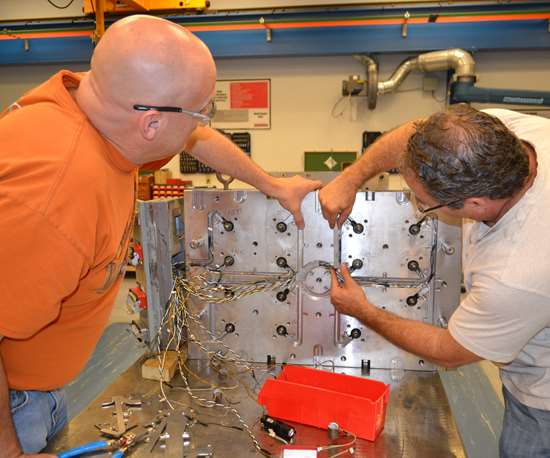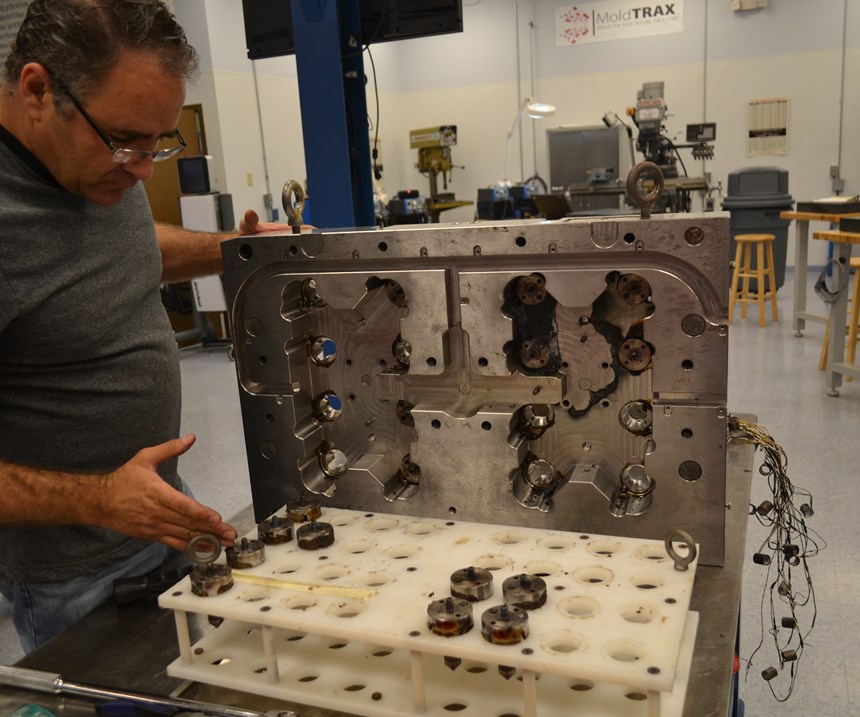How to Set Accurate Manifold Preventive Maintenance Frequencies
Appears in Print as: 'Manifolds: To PM or Not to PM'
Clearly setting accurate manifold preventive maintenance frequencies requires reliable comparative data on how a hot runner system performs over time.
#Basics #FAQ
Contributed by
The frequency of hot runner mold preventive maintenance (PM) is commonly debated across the molding industry. Opinions concerning manifold PM frequencies range from too short to too long. As a matter of fact, the opinions are as varied as the manifolds themselves, even among manifold companies.
One manifold supplier once told me that since it cannot control the environment in which its manifold is run, it does not make recommendations. This line of thinking makes perfect sense on one hand, but at the same time begs the question, “Well, if you could control the environment, what PM frequency would you recommend for a valve gate or fixed gate system running a specific resin, and what would you do to the system?” A common answer is, “Send the system back to us when it stops performing and we’ll determine what it needs and how often.” Trying to perform PM on a hot runner system after it needs maintenance puts the customer back into fire-fighting mode.
Featured Content
Frequency Facts
I reached out to several small and large manifold manufacturers to discuss recommended PM frequencies and related anxieties. Some suppliers offered general PM information online, which is helpful as a starting point. Others verbally recommended frequencies that range from 150,000 to 2 million cycles, running non-abrasive resins in valve gate systems. Still other suppliers had no information online, would only discuss maintenance for a specific system or refused to recommend any frequency, citing the aforementioned “environmental” factors.
Molding companies that perform their own in-house manifold PM also shared their frequency recommendations. Molders who track product frequencies discovered that a manifold cycle count, corresponding with historical cavitation loss, helps determine the best time to work on the manifold. This approach allows the molder to schedule the PM accordingly and greatly reduce the chance of a costly breakdown.
However, the majority of molding companies use a “when we start to have issues” decision-making process, which does not use a real cycle-number set. A few molders have an actual cycle count that dictates a desired PM frequency, but they are unsure how they derived that number other than noting that using the number they mentioned is “the way we have always done it.”
This fact-finding mission proved that clearly setting accurate PM frequencies is a gray area rooted in a lack of reliable information on how hot runner systems perform over time (in cycles per issue), what should be done and when.
Manifold Problems
Hot runner defects are the second most common manifold problem following flash as the top production stopper. The chart below is a snapshot of hot runner defects reported by 12 companies over a three-year period. The list demonstrates types, counts and percentage of specific manifold-related problems.
The chart above shows that cavities mysteriously not making parts is the number one problem for molders. Although these 5,641 issues are interrelated in a few cases, the data (judging by frequency alone) points to more position-related problems, not overall leakage issues. This means that molders need to investigate manifolds for trends and patterns to determine the exact cause of a part problem. I am mildly surprised that manifold leaks are not higher on the list, as most molders have a total encapsulation horror story. All of these issues cause production losses and stoppages at a considerable expense, so molders need to prioritize them based on costs over cycles and then analyze the data to determine the best PM strategy for that particular manifold.
Bob Duffy of Polymer Cleaning Technology, a hot runner cleaning and repair specialist, believes that his shop deals with the same number of component issues as molders. However, more of his problems concern leakage or sand bath cleanings, which remove burned material in manifold channels, as most molders are not equipped to handle these problems. The top three issues his shop faces are:
- Component Failure. He sees heater and thermocouple failure that reduces cavitation to unacceptable standards.
- Processing Issues. He sees overheating or metal in the resin stream causing black specs and contamination.
- Manifold Leakage. He sees cold starts that cause encapsulation (or small leaks that can run for months through multiple color changes before being detected), which requires all new heaters and thermocouples.
Manifolds will only perform more consistently and efficiently if the molder understands and controls the environmental factors that dictate PM frequencies.
Justifying Manifold PM
Most molders wait until the manifold needs work to run PM because there is no clear return on investment (ROI) on pulling a mold from production that is running satisfactorily just to perform PM that someone “thinks” is necessary. Plus, when it breaks down, technicians do not have to haggle with production about when to pull the mold or attempt to justify the cost of a proactive PM program with the boss. It’s a “just get it fixed” situation, and those are the most expensive mold stops.
In most cases, supporting data to determine the number of cycles at which the mold really needs a validated and accurate PM performed is nonexistent. Instead, the cycle count is a subjective decision based on a company’s desire to continuously run to manifold failure or to employ a “best practice” culture. So, one group runs molds to failure and the other runs PM programs on systems religiously at frequencies considered “much too soon” by the other group.
Manifolds will only perform more consistently and efficiently if the molder understands and controls the environmental factors that dictate PM frequencies. Molders will more easily see patterns and trends of issues when they realize processing and maintenance consistency. Molders have little choice but to run to failure when there is no methodology and unreliable manifold performance.
Duffy’s says his school of thought for justifying the cost of hot runner PM before hot runners begin to suffer product issues or a total system encapsulation (or major internal plastic leak) is, “It’s always cheaper to do regular maintenance than to wait for more serious problems, such as leaking or a reduced cavity count.”
Regular maintenance more than pays for itself in the long run. This chart shows the relative difference in cost between performing a routine cleaning and rebuilding a tool after a full leak or total encapsulation.
To understand the difference in cost is to realize that only five percent of all parts are replaced in a routine cleaning. The labor to disassemble the tool and clean manifolds, plates and components is a relatively small cost in a full leak. The major driver is the cost of spare replacement parts. According to Duffy, other costs associated with the decision to delay maintenance until tool failure include:
- An out of service tool. Turnaround time is measured in two to four days when maintenance is scheduled on a non-crisis basis. Turnaround time for a tool flood is measured in weeks, which is usually because of a lack of original equipment manufacturer spare parts.
- The loss of production. Scheduled maintenance allows for the building of a parts backlog prior to sending out the tool. Breakdowns can cause serious production delays.
- Cold side repairs. Scheduled hot runner maintenance allows a molder to make minor repairs or changeouts on the cold side of the mold.
- Freight costs. A routine cleaning enables the client to ship the tool with a low-cost scheduled commercial truck, but an emergency situation requires the client to use expensive overnight services.
Hot runner manifold problems are widespread across the plastics molding industry. Molders can only reduce their impact on profitability by learning to better control the environment in which they are run and maintained.
In August, I will drill deeper into manifold performance by looking at mold defect history, heaters and thermocouples, processing, maintenance skills and manifold design.
About the Contributor
Steve Johnson
Steve Johnson is president of MoldTrax Maintenance Solutions, which provides specialized course work, hands-on bench training, maintenance software, maintenance products, toolroom design and maintenance efficiency auditing.
RELATED CONTENT
-
A Different Approach to Mold Venting
Alternative venting valves can help overcome standard mold venting limitations and improve mold performance.
-
How to Choose the Right Tool Coating for Your Machining Application
Selection criteria and common coating attributes for PVD, CVD and other common coatings.
-
Why Choose a Valve-Gated Hot Runner?
Moldmakers need to be aware of how different gating technology can affect their customers when designing a hot runner system into a mold.














